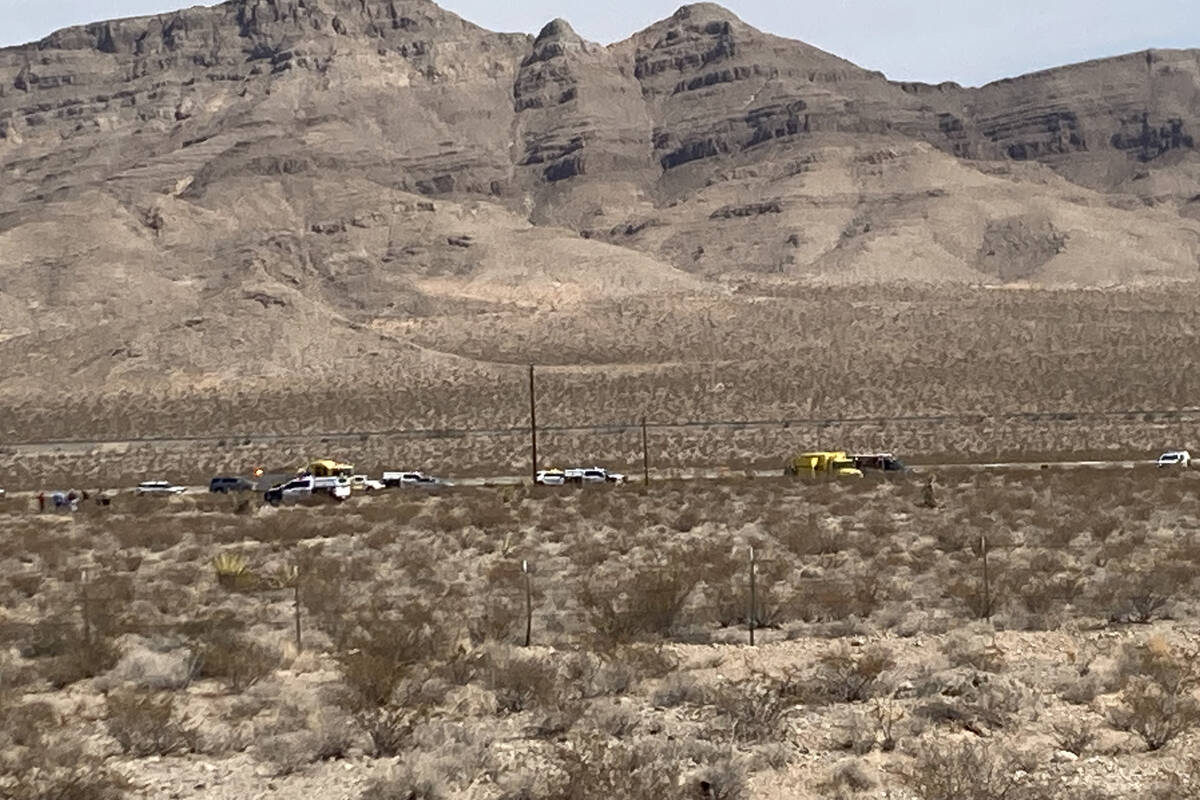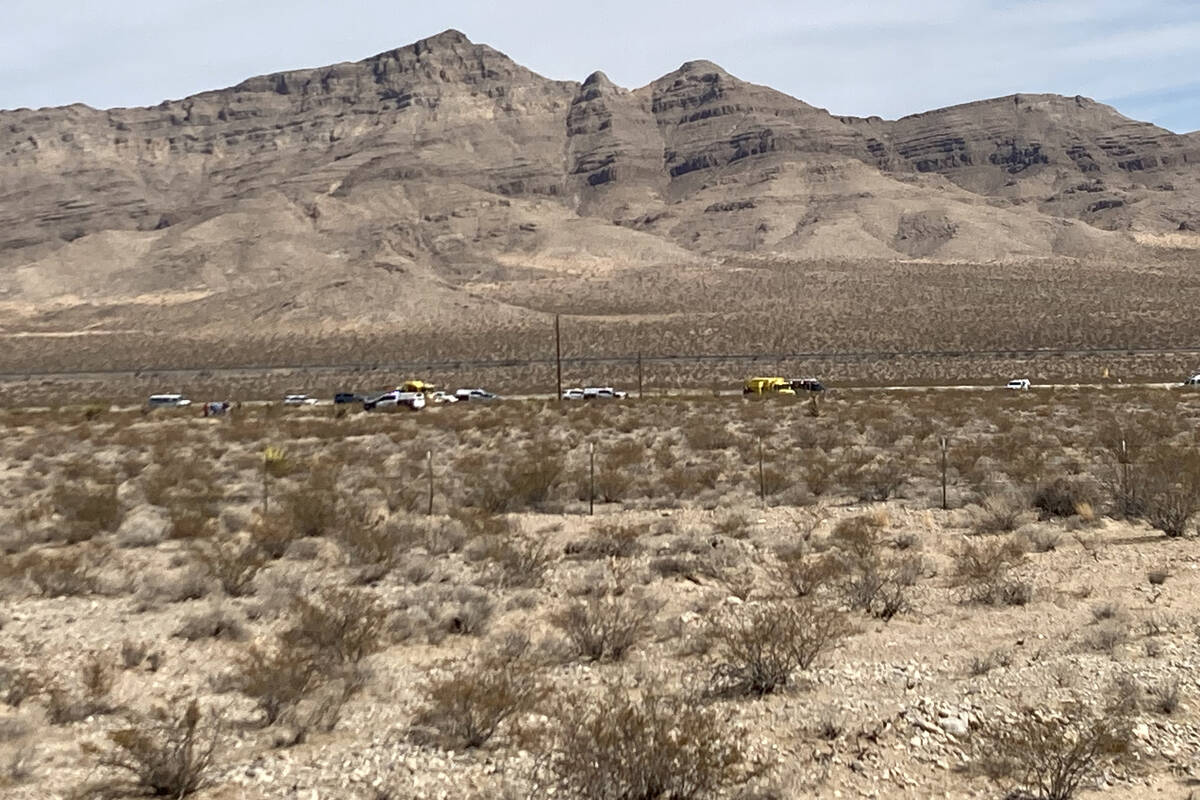‘We’re not made to fly’: Jean skydiving crash prompts experts to weigh in
After police said two skydivers were critically hurt in a tandem jump near Las Vegas after their parachute malfunctioned, industry and legal experts weighed in on the overall safety, and inherent risk, associated with jumping out of an airplane with the help of a parachute and an instructor.
“We’re not made to fly,” said Brigette Foley, a Nevada attorney with 15 years of experience handling skydiving injury cases. “So, if you jump out of an airplane, you’re supposed to have the capacity to understand the nature of the risk.”
And while that risk exists, a veteran skydiver pointed to what he said is the relative rarity of accidents as the industry says statistics point to fewer annual deaths each decade since the 1970s.
“The reason this is news is because it is extremely rare,” said Rick Eddy, who owns and is an instructor at Hurricane, Utah-based Skydive Zion.
On Sept. 17, the Metropolitan Police Department responded to a crash near the Jean Sport Aviation Center, about 25 miles south of Las Vegas, in which two men were airlifted to University Medical Center.
A Metro report redacted the names of the 24-year-old skydiving student and 54-year-old skydiving instructor who were injured. But a family friend has since identified the injured skydiving instructor as Jiron Aros Ponce, while relatives say Mitchell Deakin, a British tourist, was injured the same day, according to a GoFundMe online fundraiser.
While a spokesperson for the Federal Aviation Administration said Friday it is still investigating the incident, a report released Tuesday by the Metropolitan Police Department indicated the tandem’s backup parachute became tangled, preventing the main parachute from opening properly, while jumping from about 11,000 feet.
Ponce remained in critical condition as of Friday, according to a University Medical Center spokesperson. Meanwhile, Deakin’s family posted Thursday he was awake and walking but suffered injuries including a fractured pelvis, broken ribs, a perforated lung and a kidney laceration.
Attorney looks for possible negligence
In a statement Thursday, the FAA said it was looking specifically at “the packing of the main and reserve parachutes, and the rules of flight for the pilot and aircraft.”
Foley said she often looks for possible negligence when it comes to skydiving-related deaths or injuries.
While liability waivers are meant to protect companies by having participants accept the risks of an “inherently dangerous activity,” she noted that businesses are required to keep operations as safe as possible, including staffing highly trained instructors, keeping landing areas clear, and properly maintaining equipment.
Police in their report did not specify if liability waivers were signed in the Sept. 17 incident. It was still unclear as of Friday what skydiving company was involved in the incident.
According to Metro’s report, the plane that carried the skydivers was used by GoJump Las Vegas, though a representative for GoJump said the business was closed the day of the incident. GoJump’s founder and chief executive, Michael Vetter, denied his company’s involvement and deferred comment to Skydive Las Vegas, which he said was not affiliated with GoJump.
When asked whether Skydive Las Vegas was involved in the crash, a spokesperson who declined to give their name responded “no comment” when reached by phone on Monday. Nevada Secretary of State records show Skydive Las Vegas is registered to Brent Buckner, who is also listed as the officer for another local skydiving business, Sin City Skydiving.
Multiple attempts to reach Buckner Friday were unsuccessful.
A representative for Sin City Skydiving on Monday said Ponce was employed there, but directed all inquiries to a general email listed on the company website.
In response to Vetter’s comments, a Metro spokesperson said the department stood by its report, and any additional information would be released by the FAA, the Las Vegas Review-Journal previously reported.
Foley, who works at Paglia Law, said her firm handles around five cases a month involving clients who have been injured in activities such as ATV crashes, injuries at trampoline parks, and skydiving. But she pointed out that skydiving cases involving critical injury or death are much less common.
Eddy said he did not want to comment or speculate on what may have caused last week’s crash, but he said that skydiving crashes are rare.
“People are very familiar with car crashes and they’re so common that it’s barely news when one happens,” said Eddy, who according to his website has 26 years of experience and nearly 10,000 total skydives. “But skydiving accidents — because they’re so rare — usually make the news.”
Are skydiving injuries rare?
When it comes to best practices for skydiving safety, Eddy referred to the United States Parachute Association, a nonprofit membership organization that promotes safe skydiving practices. It advocates for the rights of skydivers, assists in securing access to airports and airspace, establishes safety standards, and functions as the governing authority for competitive skydiving.
The USPA also interacts with government agencies, organizes national competitions, and issues skydiving licenses recognized internationally, according to its website.
Nevada law requires skydiving operators to comply with requirements outlined in the USPA’s Skydiver’s Information Manual and to report any incident resulting in death or serious injury to the organization no later than one business day after the incident.
Representatives at the association did not respond to multiple requests for comment.
But a recent survey from the USPA said the activity has never been more safe.
An undated USPA press release announcing the results of a 2024 safety survey among the group’s members stated that injuries and deaths caused by skydiving have declined significantly in recent decades, thanks to improvements in equipment, training methods, and emergency response techniques, as well as a greater emphasis on “safety culture.”
Nine people died in civilian skydiving-related collisions in 2024 out of an estimated 3.88 million skydives, a record annual low since the association began keeping fatality records in 1961, according to the release. An average of 20.7 people died per year during the 2010s, compared to an average of 25.9 fatalities in the 2000s, 32.3 in the 1990s, 34.1 in the 1980s, and 42.5 in the 1970s.
In 2012, 51-year-old Richard Frazer died when his parachute folded in strong winds near Jean. The year before, Claudette Porter, 75, and instructor James Fonnesbeck, 60, both died after their parachutes failed during a tandem jump in Mesquite.
A 2024 USPA survey also noted that about 12.3 percent of members had used their reserve parachute in the past year, and 5.6 percent had sustained injuries requiring medical care, mostly ankle injuries resulting from landings.
‘We’re not made to fly’
Foley also said those participating in an inherently dangerous activity, whether it’s skydiving or swimming with sharks, must assume a certain level of risk.
Still, she said, if a business is negligent and an accident occurs, there are stronger grounds for a lawsuit.
“So those waivers, to me as a plaintiff lawyer, are like nothing burgers,” Foley said. “The waiver only comes into play if there was a tornado or a dust storm — something unexpected and natural — that causes the plane to crash or your parachute to malfunction.”
Contact Akiya Dillon at adillon@reviewjournal.com. Contact Casey Harrison at charrison@reviewjournal.com. Follow @casey-harrison.bsky.social on Bluesky.




















